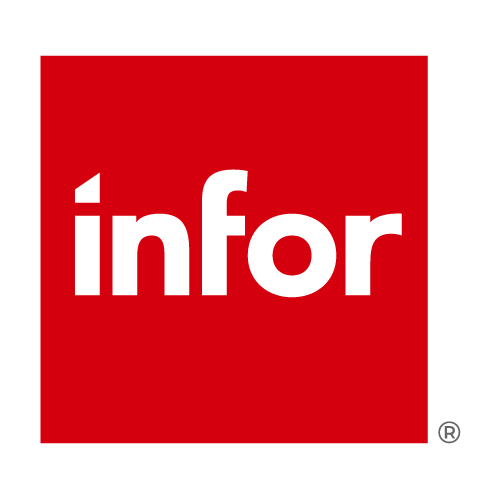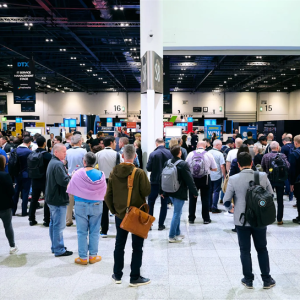
Until recently, fashion was about trends and newness. Behind the glitz and glamour, supply chains were crucial with long lead times and many partners involved. But with customers increasingly eager to know that their jackets and tops are sourced ethically, tracing an item’s precise journey from factory to store is becoming vital to fashion’s future. Visibility across the supply chain has therefore never been more important.

According to a 2021 survey by Genomatica, over half of fashion consumers believe sustainability is important in the clothes they buy. The same poll found that 55% of respondents want brands to help them understand how their collections are more sustainable than those of rivals – even as many worry about so-called ‘greenwashing’ tactics.
This gap between aspiration and reality – Geneva Environmental Network lately reported that fashion still contributes around 10% of global carbon emissions – offers vast opportunities for brands that can provide clarity and accountability across the supply chain, building lasting customer relationships along the way.
That’s echoed by the broader efficiency benefits that can come through such visibility. But with some fashion businesses reporting between 1,000 and 2,000 distinct suppliers, and traditional IT set-ups often subpar, how can companies achieve this kind of visibility in practice?
A lack of supply chain visibility
“You can’t manage what you can’t see.” Versions of this phrase have floated among supply chain experts for years. But as Helene Behrenfeldt concedes, many fashion brands have traditionally had the challenge of collecting and managing all the data from the extended production supply chain.
“The data was spread out in silos, or simply missing overall,” explains the fashion strategy director at cloud software giant Infor. “As a brand owner with outsourced production, you lose visibility of the extended supply chain.”
And as Behrenfeldt continues, not being able to provide the required data and transparency can potentially damage the brand. Nor was this an isolated issue, limited to a few prestige fashion boutiques refusing to keep up with the times. A 2021 report by KPMG found that under 20% of apparel firms have a supply chain transparency solution in place, suggesting the majority of businesses are still very early on in this journey.
Of course, there are advantages to greater supply chain visibility across all industries, but Behrenfeldt argues that the need for this is especially urgent in fashion. And this comes on top of other traditional, industry-specific challenges, like managing seasonality, long lead times and balancing demand to supply across multiple channels.
It goes without saying that understanding suppliers and production supply chains, and integrating global data into single platforms, can help brands be more in control – ultimately assisting to achieve efficiencies and manage brand protection. And if that’s obviously valuable in a sector where, as McKinsey reports, costs continue to rise, there are also advances to be made in the never-ending fight for customer loyalty.
Calling this point a “no-brainer”, Behrenfeldt suggests that a sharper, more visible supply chain can really bolster a brand’s environmental programme, as well as boost its appeal to sustainably minded shoppers.
Efficiency and sustainability
With so many incentives to change, it makes sense that fashion brands are dispensing with antiquated data management systems – and instead adopting full-visibility ERP solutions. Infor is capable of supporting this, by offering a robust fashion-specific suite of solutions to manage the design, supply chain and more.
Whatever the client, visibility is the watchword across Infor’s fashion stable. Dovetailing suppliers, retail partners and others into a single easy-to-manage platform, brands can quickly gain insights into every facet of their supply chain. That, in turn, allows staff to quickly respond to issues, fulfil demand efficiently – and spot opportunities to manage processes more efficiently by using analytics and data.
To explain what this looks like in practice, Behrenfeldt gives the example of inventory management, where visibility of available supply is crucial to make sure different sales channels are served in the best way, helping to avoid shortages as well as deadstock (waste).
At the same time, Behrenfeldt says that this kind of supply chain visibility can help connect partners across the value chain by “building a data bridge” between a brand, the main producer and the extended suppliers in the chain. If, after all, a brand can use data to actively prove that they’re crafting an ethical supply chain, they’re more likely to convince customers and be less worried about regulations around ESG compliance.
Not that this strand of supply chain visibility is simply a question of products. On the contrary, Behrenfeldt is eager to emphasise the real-world ethical benefits here, not least when it comes to workforce management. “In fashion, there’s a very intensive workforce in production,” she says. “That’s part of the sustainability – to ensure that people in factories in places like Bangladesh get treated fairly.”
As Behrenfeldt goes on to suggest, indeed, “looking after” the full scope of fashion, from conscious product design, through environmentally friendly production and fair trade, is a prime advantage of comprehensive ERP solutions. Once again, this argument is reflected in what these systems can offer. Making it easy to manage data, follow up on different metrics and have a collaborative open platform like Infor’s to support brands, no matter where in the world they are operating.
That they can achieve that while also becoming more efficient is just another reason to modernise by replacing legacy systems.








